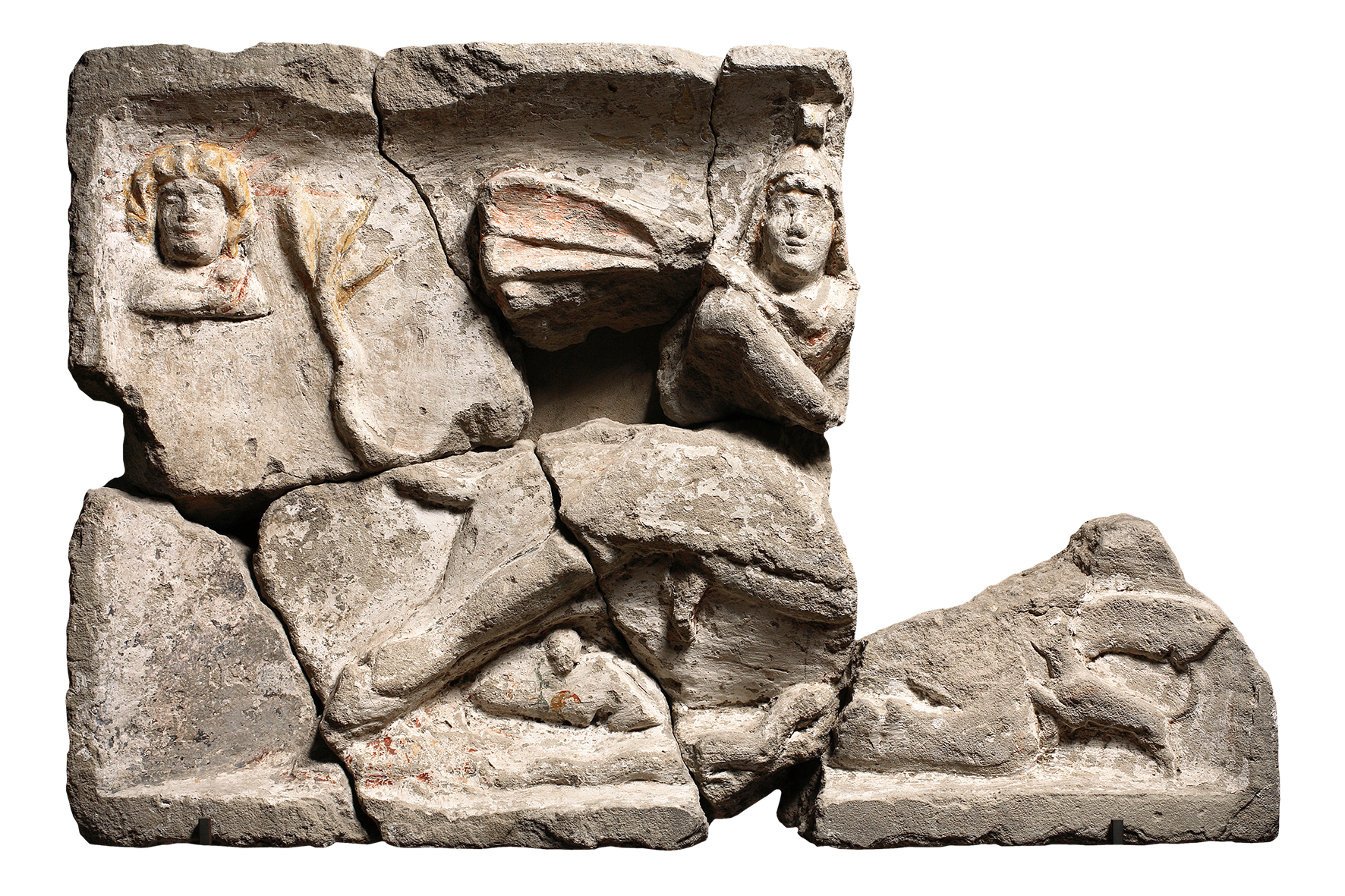Colours revealed ‒ Polychromy of Roman monuments of the Danube provinces (PolychroMon)
While the proven colourfulness of ancient stone monuments in the Mediterranean region has increasingly entered the general consciousness, only few data on the situation in the Roman provinces are available so far. The present project therefore aims at a comprehensive investigation of the polychromy of Roman stone artefacts (mainly sculptures and architectural elements) in the Noric-Pannonian region. In interdisciplinary cooperation, aspects such as polychromy as a means of visual design, ancient colour symbolism or the use of different painting techniques will be investigated. A special research focus is on objects of the Mithras cult from Carnuntum and the Vienna Basin and the significance of colour in a religious and ritual context.
Development of investigative methods
The aim of the material-analytical investigations is to detect the remains of pigments that were once applied, even if they are barely or no longer visible to the naked eye. Supplemented by classical methods of light and electron microscopy, the focus is on non-invasive methods. In addition to digitisation and modelling, primarily multi- and hyperspectral analyses, light spectroscopic methods and X-ray fluorescence analysis are used. Exploring the possibilities and limitations of current techniques is an integral part of the project, as is the development of new methods.
Project goals
The project crosses archaeological and chemical-physical data and combines scientific and cultural-historical questions in order to open up new fields of research and of application for monument conservation, museology and knowledge transfer.
Principal Investigators
- Robert Linke
- Georg Plattner
- Eduard Pollhammer
Team
Cooperations
- Bundesdenkmalamt
- Kunsthistorisches Museum Wien
- Landessammlungen Niederösterreich, Amt der NÖ Landesregierung
- University of Vienna
Duration
2021‒2025
Funding
ÖAW | Heritage Science Austria


